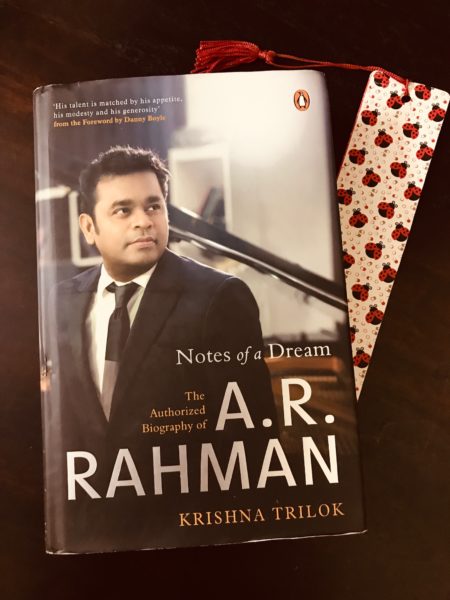I was twelve when AR Rahman arrived with his Chinna Chinna Aasai way back in 1992. I remember feeling very happy and light when I heard the song for the first time. Years have passed since then, and If I have to put my personal journey with his music in all these intervening years in a nutshell, I have just this to say: Rahman’s music is seamlessly woven into the fabric of my memories…his many, many beautiful compositions have permeated my past so much that it is impossible to separate his music from my memories. I grew up with his music. I laughed, I cried, I dreamt, I stumbled and picked myself up, always having his music as a constant presence in the background.
A few months ago, my son, Kailash, came up to me and said, ‘Amma, come, I have something for you…’ Imagine my surprise when he played a portion of one of Rahman’s finest compositions of all time, The Bombay Theme, on the piano! I was moved, so deeply, that I had tears in my eyes that day. For those few moments that he played the piece, I travelled back in time to become the excited teenager that I once was…the one who soaked herself in Rahman’s magical creations that brimmed with feeling, creativity and (perhaps I didn’t know it so well then) divinity.
Sometime last week, Maithri and I were discussing about painting together. ‘Amma,’ she told me, ‘Can you play Sevandhu Pochu Nenju when we are painting? I really like that song!’ My five-year-old daughter was referring to the track from Mani Ratnam’s Chekka Chivantha Vaanam, for which AR Rahman has scored the music. Oh yes, we did listen to the song as we painted. And I was smiling to myself all through.
From my childhood to that of my children, here’s a magical thread that runs across space and time: AR Rahman’s music.
My copy of “Notes of a Dream: The Authorized Biography of AR Rahman” by Krishna Trilok arrived on Tuesday. I began reading it, thinking I would just ‘check out’ the first few pages of the book, like I do with every other book I buy. But a few pages into it, I was hooked. Delightfully well-paced, I kept reading and turning the pages that I ended up surprising myself – I finished the book in just about 20 hours flat…a reading speed that I haven’t managed in a decade! In addition to the pace, what really worked for me is the earnestness and warmth with which the story of one of the greatest musicians of our times is told. The narration is so engaging that it transports you quite effortlessly to the place of action and the descriptions are so personally crafted and vivid that you almost always feel that you are part of the scene, watching all the action and observing the maestro from up close.
An ardent Rahman fan would most likely know some of the details shared in the book but there are some interesting surprises as well. The experiences that people who work/have worked closely with Rahman share are full of warmth, honesty and admiration, and from between the pages, we see AR Rahman emerging as the simple, honest, down-to-earth, hardworking, balanced, sincere, spiritual perfectionist. The book traces the journey of the musical genius with plenty of emotions woven in…the narration is not distant and removed but very human and involved. This, and the man himself, are perhaps the reasons why the book makes for a delightful read. By the time I finished it, I realised why my admiration for Rahman as a person and his incredible music is entirely justified. I smiled as I realised he is a man like no other. A wonderful musician, a world-famous Indian but above all a great human being.
